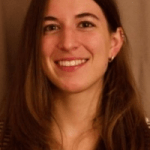The D-NESS project analyses European soils to find out which emit the most polluting N2O and why
Soils are responsible for 56-70% of global emissions of nitrous oxide (N2O) - one of the most polluting greenhouse gases after atmospheric carbon and methane - which is generated from nitrogen accumulated in the soil through a process known as 'denitrification'. This percentage is increasing, as the soil becomes increasingly enriched with nitrogen from activities such as intensive agriculture, which uses nitrogen-rich artificial fertilisers, or from livestock excrement. In this context, the D-NESS project aims to better understand the factors that influence the generation of more or less N2O, to identify the characteristics of soils at a European scale that make some soils emit more than others, and to standardise how to measure and predict these emissions. Among other things, the team is investigating the influence of environmental factors such as soil type and vegetation, agricultural or forestry use, climate and the diversity of microorganisms living in the system.
CREAF's researcher Angela Ribas, who leads the project, explains that "nitrogen is an essential element", found in all living beings which, when they die and decompose, become part of the organic matter in the soil. This nitrogen is eliminated in a natural process carried out by micro-organisms - denitrification - where one of the products generated is this greenhouse gas involved in the decomposition of atmospheric ozone. The problem is that excess nitrogen in ecosystems, both from nature and from human activities, has led to its enrichment, "which, if it becomes chronic, could exceed the capacity to remove it". Moreover, the more nitrogen, the more N2O emissions". For this reason, Ribas emphasises that it is essential to understand the mechanisms behind this emission and to find a standardised way to manage it better.

“The overuse of nitrogen, from both natural sources and human activities, has led to its enrichment, which, if it becomes chronic, could change the functioning of natural ecosystems. In addition, the more nitrogen, the more N2O"
ANGELA RIBAS, CREAF's researcher and the D-NESS coordinator.
Analysing soil samples
To carry out the research, the team analyses different soil samples, both from forests and crops, in various parts of Europe. "We want to look at the differences between agricultural and forest soils, between countries with different climates, whether there are daily or seasonal patterns, and so on.". For example, it seems logical to think that there is more emission in cultivated areas because there is more use of fertilisers and therefore nitrogen. However, there are other factors, such as temperature or soil moisture, which may influence emission patterns more than previously thought. Another of the central variables of the research focuses on studying microbial communities, "we are studying how they influence the nitrogen cycle and whether there are differences in their composition that lead to higher N2O emissions".
The soil samples have been collected by several groups of researchers from Finland, Sweden, France, Belgium, Switzerland and Italy.
The soil samples have been collected by several groups of researchers from Finland, Sweden, France, Belgium, Switzerland and Italy. "Without them, it would not have been possible to have such a variety of soils to compare," says Ribas.
The project started last 2022 and will end in 2025, it is funded by the Spanish Ministry of Science and Innovation and is led by the researcher Angela Ribas from CREAF, with the participation of the researchers Stefania Mattana, Cinta Sabaté and Alba Llovet.







